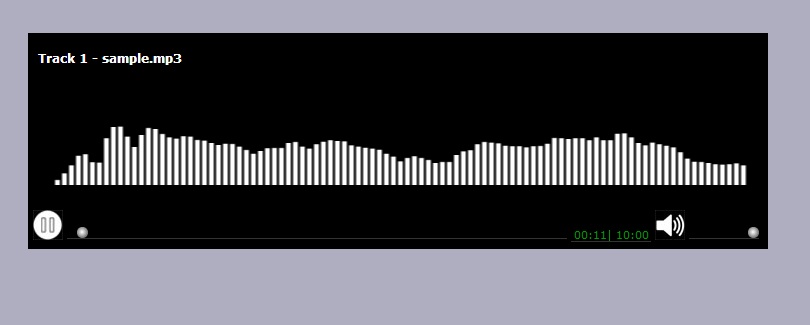

With Clip, all the sound data is specified once before the playback process, while in SourceDataLine, there is continuous buffer writing throughout the playback process. The difference between the two is in the approach of specifying the sound data. The two kinds of lines that Java provides are Clip and SourceDataLine. It achieves this by playing sound through a line to ensure it remains smooth and consistent. Java Sound API’s objective is to ensure that sound data is delivered at the correct rate and continuously over when the sound is being played. An altercation of the rate at which data is delivered will distort the sound being played. Given that sound is time-based data and must be delivered at the correct rate for it to be rendered for the user’s perception.

Java applications will sometimes be required to play audio files.

Explicitly set the chart area margins. * Returns an IlvChart instance properly configured.ĬtFont( new Font( "Dialog", Font.PLAIN, 10)) Panel = new JPanel( new GridLayout(2, 1)) Ĭontainer.add(panel, BorderLayout.CENTER) tFont( new Font( "Dialog", Font.BOLD, 16)) Ĭontainer.add(panel, BorderLayout.NORTH) Icon = new ImageIcon(IlvImageUtil.loadImageFromFile(getClass(), "volume24.gif")) JPanel panel = new JPanel( new GridLayout(0, 1)) */ public class SoundPlayer extends AbstractChartExample implements Runnable )
#Java play sound license
* is distributed under the GPL license hence cannot be provided with this * on the Tritonus Project home page (section 'Plug-in').
#Java play sound free
A free MP3 decoder that can be plugged-in this way can be found * technique is detailed in the following JavaWorld * Plug your own MP3 decoder using the new Service Provider Interface. * The Tritonus Project for more information). * supported platforms first) that natively supports MP3 audio files (see

* Use the Tritonus Java Sound implementation (be sure to check the * If you are interested in reading MP3 files, you can either: * audio file formats: AIFF, AU, WAV (only PCM, only 16 bit). * By default, the Java Sound Sun implementation supports the following PCM * supported audio formats depends on the Java Sound API implementation used. * Since this example relies on the Java Sound API to read audio files, the * audio files while displaying the audio data in two IlvCharts. It uses the Java Sound technology to play PCM
#Java play sound how to
This example shows how to display real-time data
#Java play sound software
* "Commercial Computer Software Documentation", as such terms are * consisting of "Commercial Computer Software" and * are "Commercial Items" as that term is defined at 48 CFR 2.101, * The Software and Documentation were developed at private expense and * Licensed Materials - Property of Perforce Software, Inc.


 0 kommentar(er)
0 kommentar(er)
